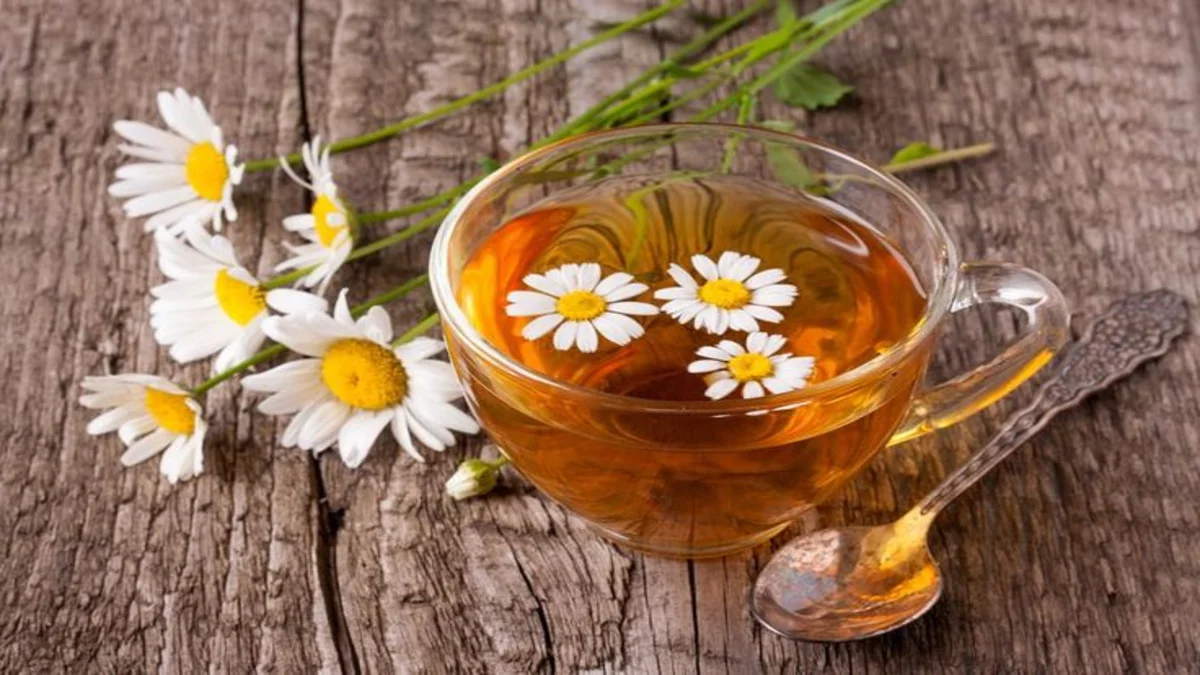Low-cholesterol meals are a powerful step towards optimal well-being. This introduction is your invitation to a flavorful journey where health and taste seamlessly converge. Embark on a delicious adventure as we unveil a curated collection of low-cholesterol meals, designed to nourish your body while tantalizing your taste buds. Say goodbye to compromise and embrace a lifestyle that champions heart health without sacrificing culinary pleasure. Let’s delve into a realm of wholesome and delightful low-cholesterol creations that redefine the way you perceive healthy eating.
What Is Cholesterol?
Before we discuss the effects of cholesterol on our bodies and the foods we eat, it is vital to first define the substance.
The waxy material known as cholesterol is found both naturally in the body and the diet. Although cholesterol is generally associated with bad things, our bodies must produce hormones, vitamins, and new cells.
Low-density lipoprotein (LDL) cholesterol and high-density lipoprotein (HDL) cholesterol are the two primary forms of blood cholesterol levels.
These two types of cholesterol have a very important distinction as one is considered good and the other bad for us.
The term “good” cholesterol refers to HDL cholesterol. This kind of cholesterol leaves the arteries behind and makes its way to the liver, where it is processed and eliminated from the body. This procedure is crucial for removing the possibility of fatty deposits in the arteries, which in turn guards against detrimental health consequences like peripheral artery disease, heart attacks, strokes, and the need for catheters.
Conversely, LDL cholesterol is referred to as “bad” cholesterol. This kind of cholesterol enters the bloodstream and has the potential to clog arteries with plaque. The accumulation of plaque causes abnormal blood flow throughout the body, which leads to the health consequences that were previously described.
low-cholesterol meals benefit
Adopting a diet rich in low-cholesterol meals offers a myriad of benefits that extend beyond mere heart health. Here are some key advantages:
- Cardiovascular Health: The primary benefit of low-cholesterol meals is the positive impact on cardiovascular health. By reducing the intake of saturated and trans fats, you can help manage cholesterol levels, lowering the risk of heart disease and improving overall cardiovascular function.
- Weight Management: Many low-cholesterol recipes are naturally nutrient-dense and low in calories. Incorporating these into your meals can support weight management efforts, as you focus on consuming foods that provide essential nutrients without excess calories.
- Improved Blood Pressure: A diet focused on low-cholesterol meals often includes foods rich in potassium, which is known to help regulate blood pressure. By maintaining healthy blood pressure levels, you contribute to overall cardiovascular well-being.
- Enhanced Nutrient Intake: Low-cholesterol meals typically emphasize whole foods, such as fruits, vegetables, whole grains, and lean proteins. These foods are packed with essential vitamins, minerals, and antioxidants, supporting overall health and boosting the immune system.
- Balanced Blood Sugar Levels: Whole, unprocessed foods found in low-cholesterol meals can help stabilize blood sugar levels. This is particularly beneficial for individuals managing diabetes or those concerned about insulin sensitivity.
- Increased Energy Levels: Nutrient-dense, low-cholesterol meals provide a steady source of energy without the spikes and crashes associated with high-sugar or high-fat diets. This sustained energy can contribute to improved daily productivity and well-being.
- Reduced Inflammation: Many foods that are part of a low-cholesterol diet have anti-inflammatory properties. Chronic inflammation is linked to various health issues, including heart disease, and adopting an anti-inflammatory diet can help mitigate these risks.
- Supports Brain Health: Certain nutrients found in low-cholesterol meals, such as omega-3 fatty acids, antioxidants, and vitamins, contribute to optimal brain function. This can potentially lower the risk of cognitive decline and improve cognitive performance.
- Digestive Health: Whole grains, fruits, and vegetables, commonly featured in low-cholesterol meals, are rich in dietary fiber. Adequate fiber intake supports digestive health, promoting regular bowel movements and preventing constipation.
- Long-Term Disease Prevention: The benefits of low-cholesterol meals extend beyond immediate health improvements. Over the long term, maintaining a heart-healthy diet can contribute to the prevention of chronic diseases and conditions, fostering a foundation for overall well-being.
what foods are good for low cholesterol?
Incorporating low-cholesterol foods into your diet is a proactive step toward promoting heart health. Here’s a list of foods that are naturally low in cholesterol and can be delicious additions to your meals:
| Category | Food Choices |
|---|---|
| Whole Grains | Oatmeal, Brown Rice, Quinoa, Barley |
| Fruits and Berries | Apples, Berries (Blueberries, Strawberries), Citrus Fruits (Oranges, Grapefruits) |
| Vegetables | Leafy Greens (Spinach, Kale), Broccoli, Brussels Sprouts, Carrots |
| Lean Proteins | Skinless Poultry (Chicken, Turkey), Fish (Salmon, Trout, Tuna), Legumes (Beans, Lentils), Tofu |
| Nuts and Seeds | Almonds, Walnuts, Chia Seeds, Flaxseeds |
| Healthy Fats | Avocado, Olive Oil, Canola Oil |
| Dairy Alternatives | Low-fat or Fat-free Yogurt, Plant-based Milk (Almond, Soy) |
| Garlic and Onions | Garlic, Onions |
| Herbs and Spices | Turmeric, Ginger, Cinnamon, Oregano |
Best 10 low-cholesterol meals
Certainly! Here’s a list of ten heart-healthy low-cholesterol meals you can consume for dinner or lunch:
1. Red Beans and Rice With Chicken (low-cholesterol meals)

Ingredients:
- 1 cup brown rice
- 1 can (15 oz) red kidney beans, drained and rinsed
- 1 lb boneless, skinless chicken breasts, diced
- 1 onion, finely chopped
- 2 cloves garlic, minced
- 1 green bell pepper, chopped
- 1 can (14 oz) diced tomatoes, undrained
- 1 teaspoon Cajun seasoning
- 1/2 teaspoon thyme
- 1/2 teaspoon oregano
- Salt and pepper to taste
- 2 cups low-sodium chicken broth
- Chopped green onions and fresh parsley for garnish
Instructions:
- Cook the brown rice according to package instructions.
- In a large skillet over medium heat, sauté the diced chicken until browned and cooked through. Remove the chicken from the skillet and set aside.
- In the same skillet, add a bit of olive oil if needed, and sauté the onion, garlic, and green bell pepper until softened.
- Add the diced tomatoes, red kidney beans, Cajun seasoning, thyme, oregano, salt, and pepper. Stir to combine.
- Pour in the chicken broth and bring the mixture to a simmer. Allow it to cook for 10-15 minutes, letting the flavors meld and the liquid reduce slightly.
- Add the cooked chicken back to the skillet and simmer for an additional 5-7 minutes.
- Serve the red beans and chicken mixture over the cooked brown rice.
- Garnish with chopped green onions and fresh parsley.
2. Mediterranean Shrimp Skillet (low-cholesterol meals)
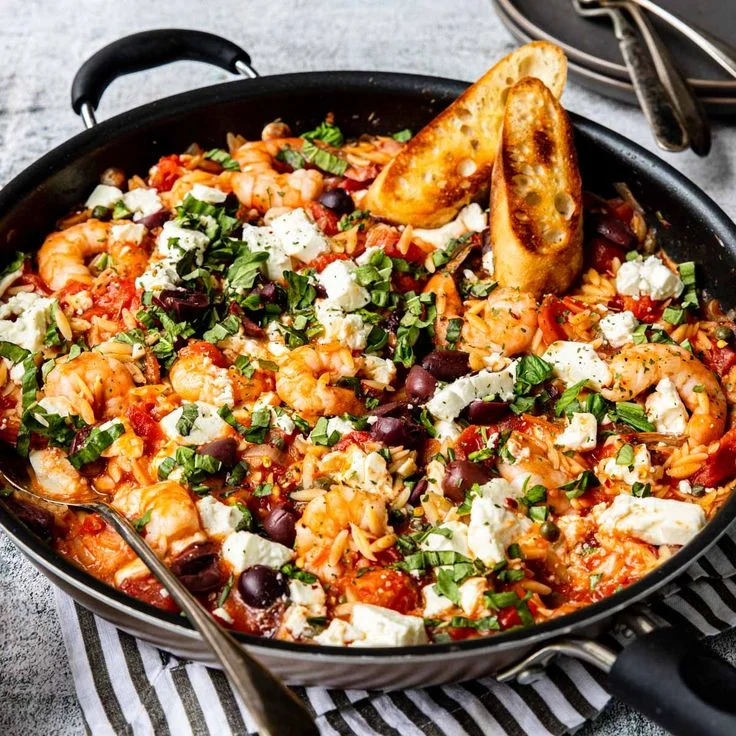
Ingredients:
- 1 lb large shrimp, peeled and deveined
- 2 tablespoons olive oil
- 3 cloves garlic, minced
- 1 pint cherry tomatoes, halved
- 1/2 cup Kalamata olives, pitted and sliced
- 1/3 cup feta cheese, crumbled
- 1 teaspoon dried oregano
- 1/2 teaspoon dried basil
- Salt and pepper to taste
- Fresh parsley for garnish
- Lemon wedges for serving
Instructions:
- In a large skillet, heat olive oil over medium-high heat.
- Add minced garlic and sauté for 1-2 minutes until fragrant.
- Add the shrimp to the skillet and cook for 2-3 minutes on each side or until they turn pink and opaque. Remove the shrimp from the skillet and set aside.
- In the same skillet, add halved cherry tomatoes and sliced Kalamata olives. Sauté for 3-4 minutes until the tomatoes start to soften.
- Return the cooked shrimp to the skillet, and sprinkle the dish with dried oregano, dried basil, salt, and pepper. Toss everything together to combine.
- Crumble feta cheese over the shrimp and tomato mixture, allowing it to melt slightly.
- Cook for an additional 2-3 minutes until all ingredients are heated through.
- Garnish with fresh parsley and serve immediately with lemon wedges on the side.
3. Grilled Pineapple Pork and Vegetables (low-cholesterol meals)

Ingredients:
- 1 lb pork tenderloin, sliced into medallions
- 1 cup pineapple chunks
- 1 red bell pepper, sliced
- 1 yellow bell pepper, sliced
- 1 zucchini, sliced
- 1 red onion, sliced into rings
- 2 tablespoons olive oil
- 2 tablespoons soy sauce
- 1 tablespoon honey
- 1 teaspoon ground cumin
- 1 teaspoon smoked paprika
- Salt and pepper to taste
- Fresh cilantro for garnish
Instructions:
- In a bowl, whisk together olive oil, soy sauce, honey, ground cumin, smoked paprika, salt, and pepper to create the marinade.
- Place pork medallions in a resealable bag or shallow dish. Pour half of the marinade over the pork, ensuring each piece is coated. Reserve the other half for the vegetables.
- Marinate the pork in the refrigerator for at least 30 minutes, allowing the flavors to infuse.
- Preheat the grill to medium-high heat.
- Thread the marinated pork, pineapple chunks, bell peppers, zucchini, and red onion onto skewers.
- Grill the skewers for 8-10 minutes, turning occasionally, or until the pork is cooked through and the vegetables are charred and tender.
- While grilling, brush the reserved marinade onto the skewers for added flavor.
- Once cooked, remove the skewers from the grill and let them rest for a few minutes.
- Garnish with fresh cilantro and serve the Grilled Pineapple Pork and Vegetables over rice or your preferred side.
4. Pressure Cooker Beef and Broccoli (low-cholesterol meals)

Ingredients:
- 1.5 lbs flank steak, thinly sliced
- 1 cup low-sodium soy sauce
- 1/2 cup beef broth
- 1/4 cup oyster sauce
- 3 tablespoons brown sugar
- 3 cloves garlic, minced
- 1 tablespoon fresh ginger, grated
- 2 tablespoons cornstarch
- 1/4 cup water
- 4 cups broccoli florets
- 2 tablespoons vegetable oil
- Sesame seeds and green onions for garnish
- Cooked white rice for serving
Instructions:
- In a bowl, whisk together soy sauce, beef broth, oyster sauce, brown sugar, minced garlic, and grated ginger to create the marinade.
- Place the thinly sliced flank steak in the pressure cooker and pour half of the marinade over the beef. Set aside the remaining half for later.
- Close the pressure cooker lid and set it to cook on high pressure for 8 minutes.
- While the beef is cooking, blanch the broccoli florets in boiling water for 2 minutes. Drain and set aside.
- In a small bowl, mix cornstarch with water to create a slurry.
- Once the pressure cooking is complete, perform a quick release, and carefully open the lid.
- Add the broccoli to the pressure cooker with the cooked beef.
- In a separate pan, heat vegetable oil over medium heat. Pour in the reserved marinade and cornstarch slurry. Stir continuously until the sauce thickens.
- Pour the thickened sauce over the beef and broccoli in the pressure cooker. Gently toss everything together.
- Serve the Pressure Cooker Beef and Broccoli over cooked white rice.
- Garnish with sesame seeds and chopped green onions.
5. Zucchini With Pistachios and Mint (low-cholesterol meals)
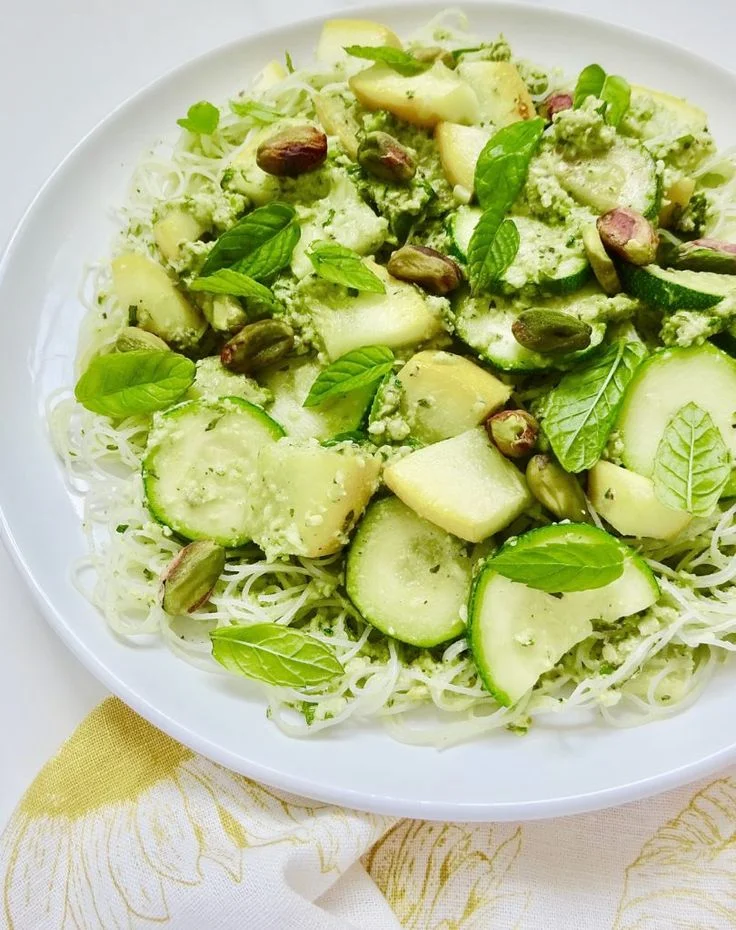
Ingredients:
- 4 medium-sized zucchinis, thinly sliced
- 1/2 cup shelled pistachios, chopped
- 2 tablespoons fresh mint, finely chopped
- 2 tablespoons olive oil
- 2 cloves garlic, minced
- Zest and juice of 1 lemon
- Salt and pepper to taste
- Crumbled feta cheese (optional, for garnish)
Instructions:
- Heat olive oil in a large skillet over medium heat.
- Add minced garlic and sauté for 1-2 minutes until fragrant.
- Add the thinly sliced zucchini to the skillet. Cook for 3-4 minutes, tossing occasionally, until the zucchinis are tender but still crisp.
- Stir in the chopped pistachios and continue to cook for an additional 2 minutes.
- Remove the skillet from heat and add fresh mint, lemon zest, and lemon juice. Toss everything together to combine.
- Season with salt and pepper to taste.
- Transfer the Zucchini with Pistachios and Mint to a serving platter.
- If desired, sprinkle crumbled feta cheese over the top for an extra burst of flavor.
- Serve immediately as a vibrant side dish or a light main course.
6. Lemon-Herb Salmon (low-cholesterol meals)

Ingredients:
- 4 salmon fillets (about 6 oz each)
- 2 tablespoons olive oil
- 2 tablespoons fresh lemon juice
- 2 cloves garlic, minced
- 1 teaspoon fresh thyme, chopped
- 1 teaspoon fresh rosemary, chopped
- Salt and pepper to taste
- Lemon slices for garnish
- Fresh parsley for garnish
Instructions:
- Preheat the oven to 400°F (200°C).
- In a small bowl, whisk together olive oil, lemon juice, minced garlic, chopped thyme, and chopped rosemary.
- Place the salmon fillets on a baking sheet lined with parchment paper or aluminum foil.
- Brush the salmon fillets with the lemon-herb mixture, ensuring they are well-coated.
- Season the fillets with salt and pepper to taste.
- Bake the salmon in the preheated oven for 12-15 minutes or until the salmon flakes easily with a fork.
- For an extra burst of flavor, broil the salmon for an additional 1-2 minutes until the top is lightly browned.
- Remove the salmon from the oven and garnish with lemon slices and fresh parsley.
- Serve the Lemon-Herb Salmon hot, paired with your favorite steamed vegetables or a side of quinoa.
7. Sweet Potato-Black Bean Burgers (low-cholesterol meals)
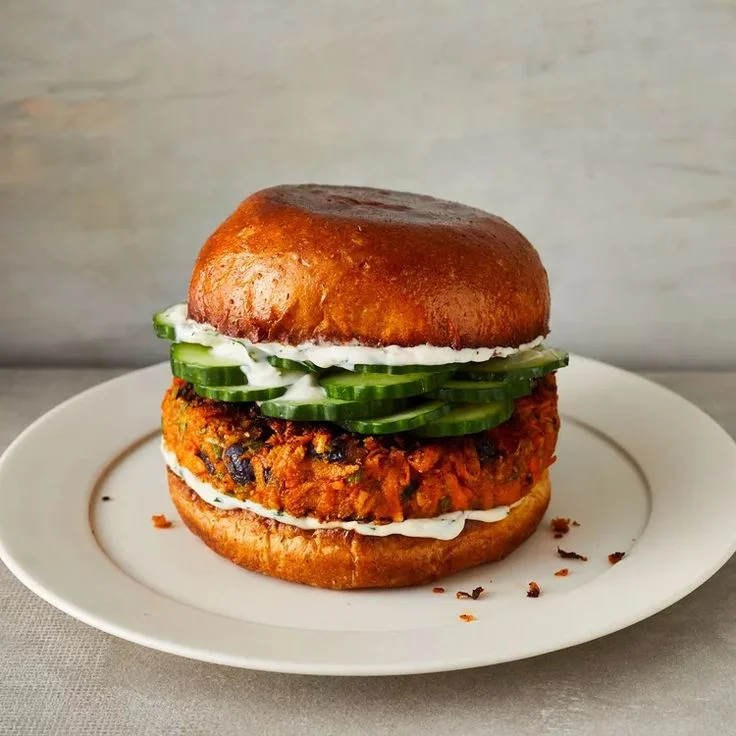
Ingredients:
- 2 cups sweet potatoes, peeled and grated
- 1 can (15 oz) black beans, drained and rinsed
- 1 cup breadcrumbs (whole wheat for added fiber)
- 1/2 cup red onion, finely chopped
- 1/4 cup fresh cilantro, chopped
- 2 cloves garlic, minced
- 1 teaspoon ground cumin
- 1 teaspoon chili powder
- Salt and pepper to taste
- 2 tablespoons olive oil
- Whole grain burger buns
- Toppings of your choice (lettuce, tomato, avocado, etc.)
Instructions:
- Preheat the oven to 375°F (190°C).
- In a large mixing bowl, combine grated sweet potatoes, black beans, breadcrumbs, red onion, cilantro, minced garlic, ground cumin, chili powder, salt, and pepper.
- Mash the black beans slightly to help bind the mixture together.
- Form the mixture into burger patties, ensuring they are well compacted to hold their shape.
- Heat olive oil in a skillet over medium heat.
- Cook the sweet potato-black bean patties for 3-4 minutes on each side until they develop a golden-brown crust.
- Transfer the patties to a baking sheet and bake in the preheated oven for 15-20 minutes, ensuring they are cooked through.
- Toast the whole grain burger buns in the oven for a few minutes.
- Assemble your Sweet Potato-Black Bean Burgers with your favorite toppings on the toasted buns.
- Serve hot and enjoy these flavorful, plant-based burgers!
8. Spanish Rice (low-cholesterol meals)
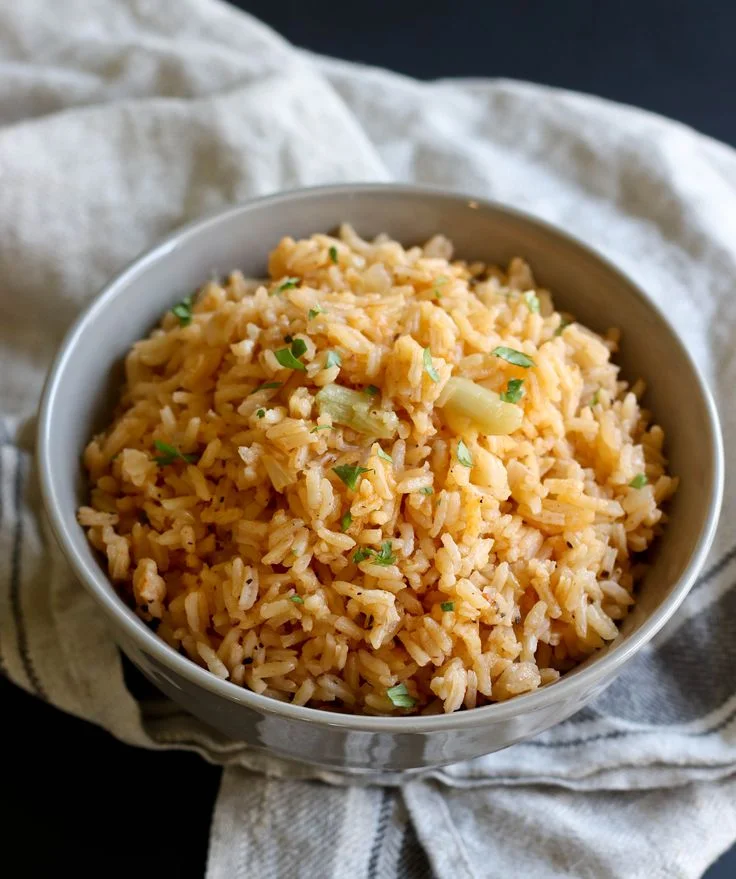
Ingredients:
- 1 cup long-grain white rice
- 2 tablespoons olive oil
- 1 onion, finely chopped
- 1 bell pepper (any color), diced
- 2 cloves garlic, minced
- 1 can (14 oz) diced tomatoes, undrained
- 1 teaspoon ground cumin
- 1 teaspoon smoked paprika
- 1/2 teaspoon chili powder (adjust to taste)
- 1 3/4 cups vegetable or chicken broth
- Salt and pepper to taste
- Fresh cilantro for garnish (optional)
- Lime wedges for serving
Instructions:
- Rinse the rice under cold water until the water runs clear. Drain and set aside.
- In a large skillet with a tight-fitting lid, heat the olive oil over medium heat.
- Add the chopped onion and bell pepper. Sauté for 3-4 minutes until they begin to soften.
- Add the minced garlic and continue to sauté for an additional 1-2 minutes.
- Stir in the rice and cook for 2-3 minutes, allowing the rice to lightly toast.
- Add the diced tomatoes with their juice, ground cumin, smoked paprika, and chili powder. Mix well.
- Pour in the vegetable or chicken broth, and season with salt and pepper. Stir to combine.
- Bring the mixture to a boil, then reduce the heat to low. Cover the skillet with the lid and simmer for 15-20 minutes or until the rice is cooked and the liquid is absorbed.
- Fluff the rice with a fork and let it sit, covered, for an additional 5 minutes.
- Garnish the Spanish Rice with fresh cilantro, if desired. Serve with lime wedges on the side.
FAQs
Is rice bad for high cholesterol?
what foods should I cut out if I have high cholesterol?
Butter, lard, and ghee.
Cream and hard cheese, like cheddar.
Cakes and biscuits.
Food that contains coconut oil or palm oil.
What food is high in protein but low in cholesterol?
Chickpeas.
Edamame.
Lentils.
Tofu.





